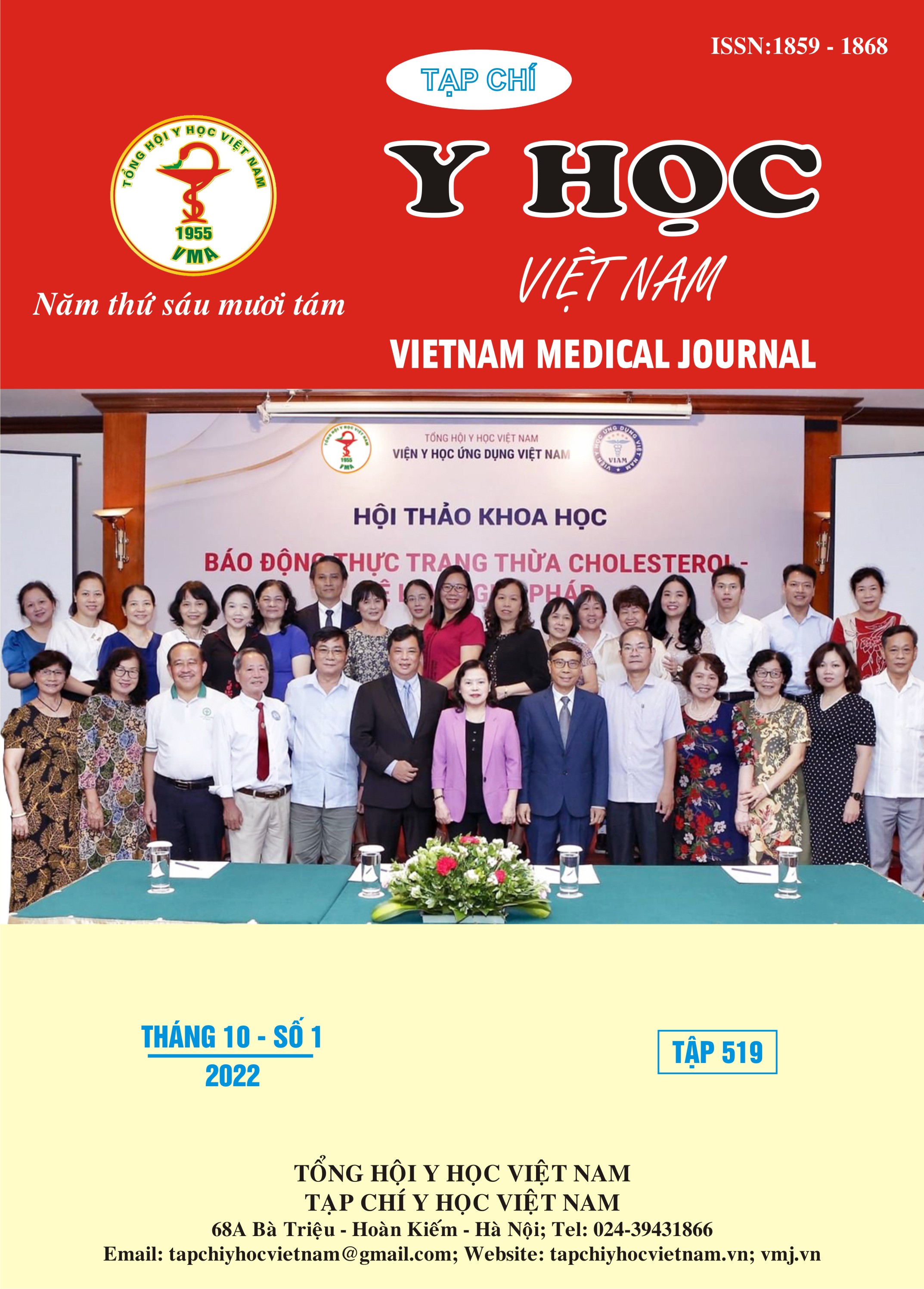VALUE OF THE PEGUERO - LO PRESTI CRITERION IN DIAGNOSIS OF LEFT VENTRICULAR HYPERTROPHY IN PATIENTS WITH AORTIC VALVE DISEASE
Main Article Content
Abstract
Objective: Left ventricular hypertrophy can be caused by aortic valve disease, which influences the patient's prognosis in the future. This study sought to determine the value of the Peguero - Lo Presti criterion in the diagnosis of left ventricular hypertrophy in patients with aortic valve disease. Methods: Between 8/2021 and 6/2022 at Vietnam National Heart Institute, Bach Mai Hospital, a total of 82 patients with aortic valve disease underwent echocardiography and electrocardiogram recording to determine the value of Peguero - Lo Presti criterion and compare with some other traditional criteria by ROC curve and calculate sensitivity and specificity values. Results: 82 patients with a mean age of 64.00 ± 10.89, male accounted for more (61%), comorbidities of 34.1% hypertension and 11% diabetes. The echocardiography and electrocardiogram parameters between the aortic stenosis group and the aortic regurgitation group were similar, except that the mean pressure gradient in the aortic stenosis group was significantly higher than the aortic regurgitation group, which was statistically significant. The electrocardiographic criteria have a relatively close correlation with the volume of the left ventricular mass index, all R > 0.4. All criteria had the value of the area under the curve that is significant to distinguish left ventricular hypertrophy, respectively, of Cornell, Peguero and Sokolow-Lyon were 0.67; 0.67; 0.75. And, the sensitivity and specificity of the Sokolow-Lyon criterion were quite large with the highest specificity, 73.0%, and 73.7%, respectively. The highest sensitivity belonged to the Peguero criterion of 74.6%, although the specificity is only 42.1%. In the group with single aortic stenosis, the Pegeuro criterion revealed the highest sensitivity at 80.6%, while the Cornel criterion showed the highest specificity at 75.0%. Conclusion: The Pegeuro criterion had a relative value for diagnosing left ventricular hypertrophy in patients with aortic valve disease with an area under the AUC curve of 0.67, with high sensitivity, especially in the group with single aortic valve disease. It is necessary to combine different ECG criteria to make an accurate assessment of left ventricular hypertrophy in these subjects.
Article Details
Keywords
Peguero - Lo Presti criterion, Left ventricular hypertrophy, aortic valve disease
References
2. Schillaci G, Verdecchia P, Borgioni C, et al. Improved electrocardiographic diagnosis of left ventricular hypertrophy. The American Journal of Cardiology. 1994;74(7):714-719. doi:10.1016/ 0002-9149(94)90316-6
3. Levy D. Echocardiographically Detected Left Ventricular Hypertrophy: Prevalence and Risk Factors: The Framingham Heart Study. Ann Intern Med. 1988;108(1):7. doi:10.7326/0003-4819-108-1-7
4. Sundström J, Lind L, Ärnlöv J, Zethelius B, Andrén B, Lithell HO. Echocardiographic and Electrocardiographic Diagnoses of Left Ventricular Hypertrophy Predict Mortality Independently of Each Other in a Population of Elderly Men. Circulation. 2001;103(19):2346-2351. doi:10.1161/01.CIR.103.19.2346
5. Peguero JG, Lo Presti S, Perez J, Issa O, Brenes JC, Tolentino A. Electrocardiographic Criteria for the Diagnosis of Left Ventricular Hypertrophy. Journal of the American College of Cardiology. 2017;69(13):1694-1703. doi:10.1016/j.jacc.2017.01.037
6. Gamrat A, Trojanowicz K, Surdacki MA, et al. Diagnostic Ability of Peguero-Lo Presti Electrocardiographic Left Ventricular Hypertrophy Criterion in Severe Aortic Stenosis. JCM. 2021;10(13):2864. doi:10.3390/jcm10132864
7. Tanaka T, Yahagi K, Asami M, et al. Prognostic impact of electrocardiographic left ventricular hypertrophy following transcatheter aortic valve replacement. Journal of Cardiology. 2021;77(4): 346-352. doi:10.1016/ j.jjcc.2020.12.017
8. Park K, Park TH, Jo YS, et al. Prognostic effect of increased left ventricular wall thickness in severe aortic stenosis. Cardiovasc Ultrasound. 2021;19(1):5. doi:10.1186/s12947-020-00234-x


